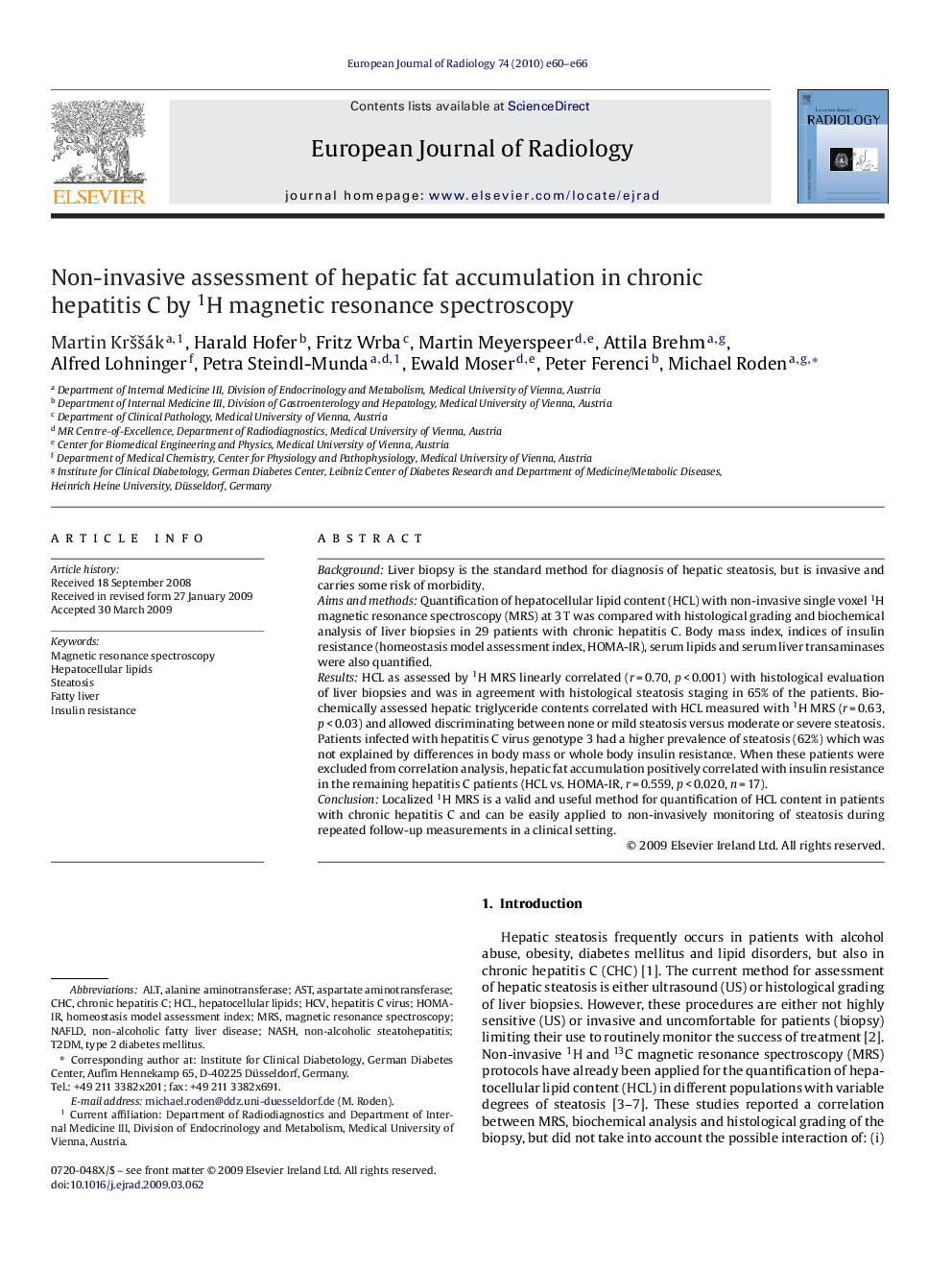| Article ID | Journal | Published Year | Pages | File Type |
|---|---|---|---|---|
| 4227498 | European Journal of Radiology | 2010 | 7 Pages |
BackgroundLiver biopsy is the standard method for diagnosis of hepatic steatosis, but is invasive and carries some risk of morbidity.Aims and methodsQuantification of hepatocellular lipid content (HCL) with non-invasive single voxel 1H magnetic resonance spectroscopy (MRS) at 3 T was compared with histological grading and biochemical analysis of liver biopsies in 29 patients with chronic hepatitis C. Body mass index, indices of insulin resistance (homeostasis model assessment index, HOMA-IR), serum lipids and serum liver transaminases were also quantified.ResultsHCL as assessed by 1H MRS linearly correlated (r = 0.70, p < 0.001) with histological evaluation of liver biopsies and was in agreement with histological steatosis staging in 65% of the patients. Biochemically assessed hepatic triglyceride contents correlated with HCL measured with 1H MRS (r = 0.63, p < 0.03) and allowed discriminating between none or mild steatosis versus moderate or severe steatosis. Patients infected with hepatitis C virus genotype 3 had a higher prevalence of steatosis (62%) which was not explained by differences in body mass or whole body insulin resistance. When these patients were excluded from correlation analysis, hepatic fat accumulation positively correlated with insulin resistance in the remaining hepatitis C patients (HCL vs. HOMA-IR, r = 0.559, p < 0.020, n = 17).ConclusionLocalized 1H MRS is a valid and useful method for quantification of HCL content in patients with chronic hepatitis C and can be easily applied to non-invasively monitoring of steatosis during repeated follow-up measurements in a clinical setting.
